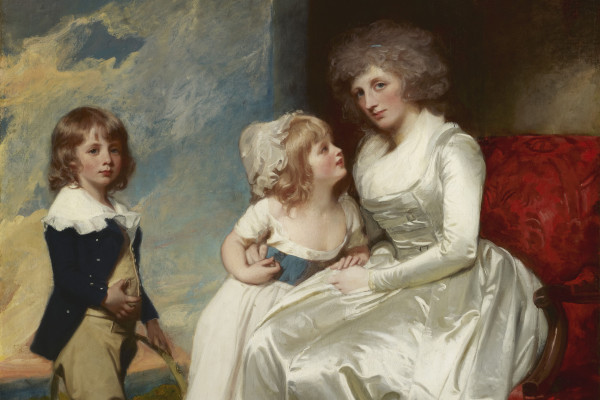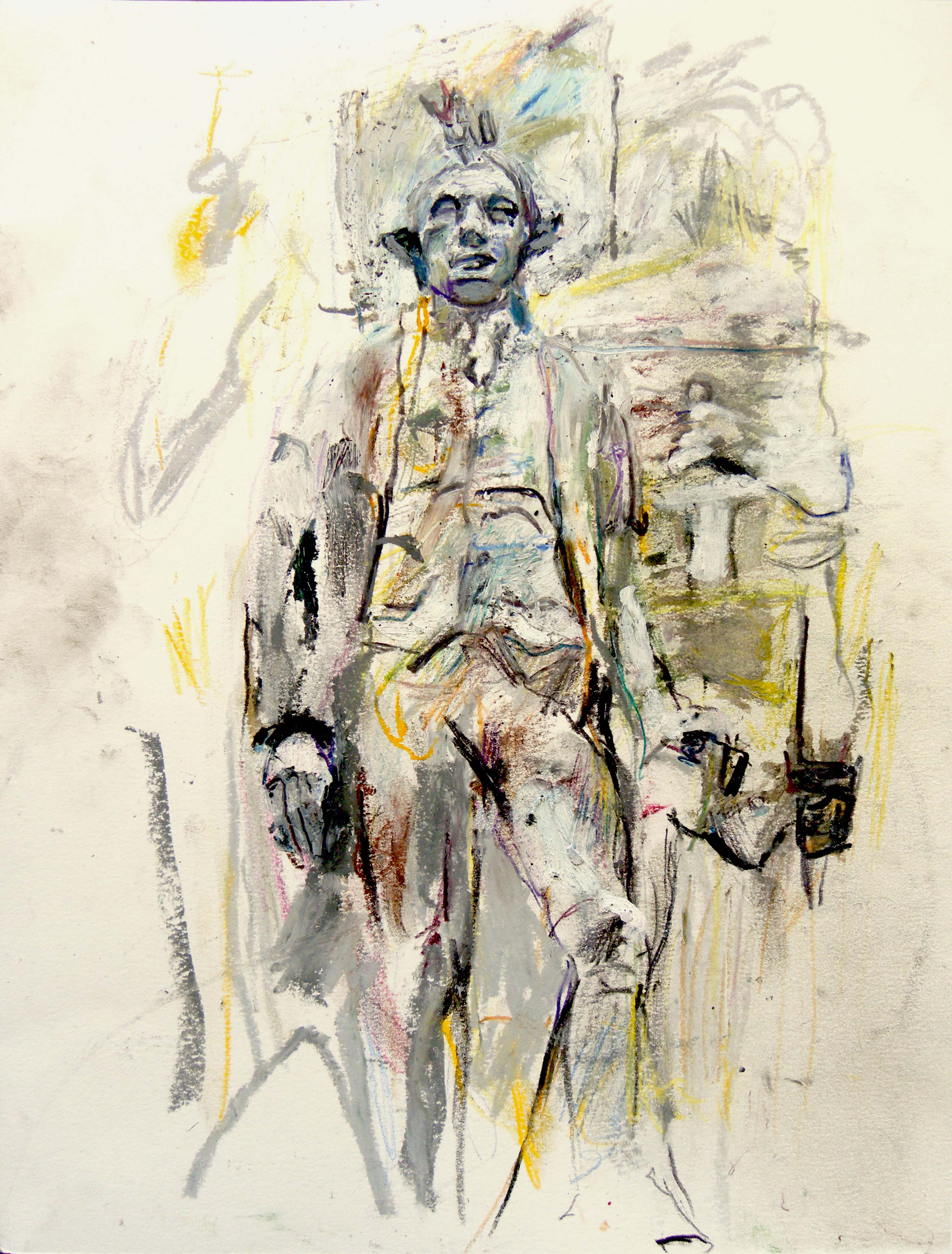The Frick Collection
Review by Elisabeth Sherman
—
Since I moved to New York five years ago, I have considered the Frick Museum a refuge from the pressures of being alive in Manhattan, the constant noise and incessant bustle, just the sheer volume other humans crushing against each other, running to be somewhere, always just about to be late for some pressing engagement.
I go the Frick alone usually, although once I brought my father when he came to visit me for my college graduation; we share the desire to look art in silence. But when I arrived there late on a Friday afternoon, again unaccompanied, to see the exhibit Vermeer, Rembrandt, and Hals: Masterpieces of Dutch Painting from the Mauritshuis, I rounded the corner of 70th street and nearly ran headlong into a line of people outside the museum. I had never encountered a line outside of the Frick, and having just walked through the park from the West Side, I was not eager to spend another second outside in the crisp autumn air.
I recalled being stuck in line to get into the Louvre this past summer. It was nearly three in the afternoon when I arrived. I would have just about an hour to rush through before the museum closed. I was standing behind an American couple and their three sons, who had shown up in basketball shorts while the parents sported more traditional apparel: khakis and floral print. The boys were preoccupied with their iPhones while their parents talked to the newly engaged couple just ahead of them; I was nearly blinded by the lady’s engagement ring when I tried to look directly at her hand.
I enjoyed Paris, but the flashback was not pleasant: I was flooded by loneliness watching these two families interact and enjoy each other, while I, alone, could only be reminded of the family that I didn’t have, either in Paris or back home in New York, where I also live alone.
But the line moved fast outside the Frick and I was in-doors within a few moments, wandering the corridors of the museum with my notebook tucked in the back pocket of my jeans. I entered The Dining Room first, where I found George Romney’s portrait of Lady Warwick and her children, an affectionate and warm painting. In the Library, I found Joshua Reynolds mirrored portraits of Lady Taylor and Lady Skipwith, both clothed in blue and sporting tall white powdered wigs. They face each other, separated by a mirror, and I have always found them to be in competition with each other, silently and demurely. In fact, George Romney and Joshua Reynolds, as well as Thomas Gainsborough, whose portraits of Frances Duncombe and one Mrs. Baker are among my favorites in the Frick’s collection, were in constant competition with each other as the most fashionable Rococo style painters of the 18th century.
I have always been drawn to the portraits of aristocratic women in the Frick. These are the first works that I look at when I visit, and I often circle back to them. The features of these women are soft and delicate, emphasis is placed on representing their physical beauty and their fashionable clothing, always ornate and luxurious in pastel colors—they are light as air, about to float away on the folds of their gowns like angels. But there is something else too, in the brightness of their eyes, the curve of their lips, that adds a light sweep of personality to each of their faces, sometimes lust or mischievousness, but sometimes boredom too, which is equally compelling: Were they just as exasperated with the limited scope of a woman’s life in the 18th century as I would have been then? Most of them are a flushed bright red as though they had burst into the artist’s studio in a fit of laughter and collapsed into position, energetic and full of life, but stuck there still as stone, while their likeness is captured in oil for posterity.
That day was busier than usual because people were eager to see the Vermeer. The Girl with The Pearl Earring was on display. It was louder in the museum too, and I was surprised, because the crowd that day was mostly older women pacing the galleries in groups of two or three, sometimes with male companions. I listened to their conversations as I passed by them and detected no accent. Where was their museum etiquette? It was probably quieter in the Met.
The staff let people into the Vermeer gallery in twenty-minute intervals, so after I did my usual rounds of the collection, I sat down in the courtyard for the remaining five minutes to rest my feet. I felt at ease there, the sound of the fountain’s gurgling water a kind respite from the chattering of the other patrons. People tend to gather on the stone benches near the fountain and it the situation strikes me as awkward, strangers gathered together on these benches with their legs uncomfortably crossed and slouched over with nothing to lean against. I love to watch this happen to people in public spaces—not acknowledge each other, vocally at least, and then turn away from each other, staring hard at a leaf or glancing up at the ceiling to avoid eye contact. These interactions seems especially unartistic, or least not the art of George Romney—they lack all of the grace of his ladies—but they are far more human than Romney’s attempts to capture the essence of a person.
When it was my turn, I entered the gallery without much of a gasp though the painting did take my breath away up close. The gallery isn’t closed off or blocked so you can see the painting from afar if you’re sitting in the courtyard. Though the background of the painting is black, there is something bright about it—in the girl’s eyes, in the yellow and green of her clothing. She seems just about to turn away from her audience, so the painting has a momentary quality, as though it might disappear or shift positions if you look away. Nothing about it seems posed to me, and as I moved through the gallery I noticed this same photographic quality to all of the Vermeer work on display. In Girl at Her Music, the female subject seems to quickly notice that someone has entered the room while she is having her lesson. Similarly in Mistress and Maid, the maid leans down to hand her mistress a note, the gestures between the two women captured as though in snapshot of a moment that can’t ever be the same twice. Vermeer seems especially interested in these distinct moments of action, not extended sequences, like Christ being lifted off the cross, which has a concrete narrative that exists outside of the imagination, even the world-view, of the painter and the viewer. Vermeer’s paintings don’t have an end or a beginning; they are singular moments in time not events being depicted to record history. Though we could imagine a narrative existing between the maid and her mistress, it would be a fabrication created by the audience.
What Vermeer wants us to look at is fluid time instead of frozen: the regularities of daily life—writing a letter or playing music—examined up close. Vermeer might like to watch the tired museum-goers on the courtyard benches, watching those unexciting, often boring, moments of humanity unfold. Vermeer’s women—and I say this knowing he was not primarily a portrait painter—are not stagnant, stuck in a frame. They’re engaged in actions and movements, experiencing the current of their lives. I kept going back to the Mistress and Maid, which looks as though Vermeer snapped his fingers and time stopped so that he could capture all the peculiarities of the shape of the body in the moment of reaching and leaning and holding a quill. And yet there is so much about that moment does not stop either, because there is, after all, the suggestion of continuation, that the moment after the work was painted the lives of the subjects continued without the knowledge of the painter or the audience—the movement of the figures lends to this feeling: if the maid is in the process of extending her arm to pass on the letter, it must follow that the girl will take it and the arm will retract. There is a distinct feeling of being a voyeur of other people’s lives in his work, of getting the chance to peak inside the daily routine of strangers.
The Frick museum used to be a house. It was built in 1913 for Henry Clay Frick. Though it’s true that the residence was built with Frick’s knowledge that his art collection would be left to the public, and that the house underwent several renovations to accommodate his growing collection, his wife lived there until her death 1931. It was only then that the home began to transform into a museum. I can’t imagine anything more intimate than a family opening it’s doors to the public and allowing them to walk those halls that belonged to their family, the places where they ate and read, where there were all the private incidents and accidents of family life, and I feel like the same voyeur when I look at the Vermeer paintings. The museum feels alive, imprinted by the lives of this family, who I didn’t know but feel still personally connected to their legacy, the recipient of a special and secret gift: access to the place where they experienced the monotony of their daily ritual. I want to touch the walls and feel what is behind them, this other, unknown ghost world of the people who called this place their sanctuary far before I was on the planet.
Before I left the museum I did one last lap around the galleries, admiring the sunlit Turner landscapes and the Goya painting of three men at the forge, their backs to viewer—a work which denies an audience and it’s role as art and therefore has always captivated me—passing the blocked off staircase with a glance of longing. What is up there? Hidden places: bedrooms and bathrooms that skin has touched, the places that the Frick family chose to keep for themselves and yet I want nothing more than to climb over the red velvet rope and violate that contract of privacy. I want to see the rest of the house. It’s not art, but it’s history just the same, the lives of strangers on display.
—
Elisabeth Sherman is a writer living and working in New York City. Her work has appeared on Not So Popular and Tor. You can follow her on Twitter.




